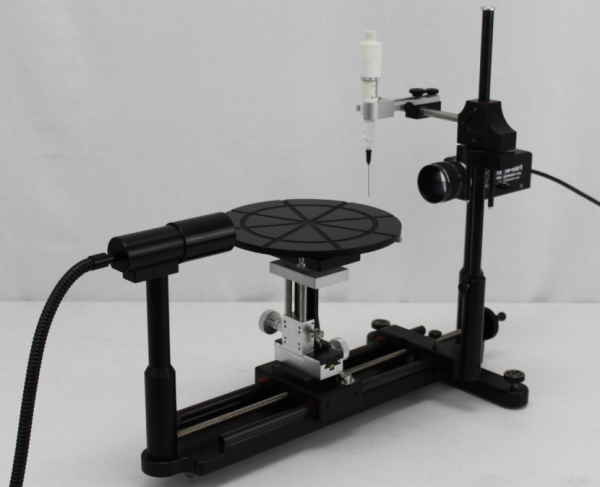|
October
2025 |
| Contact Angle for Chipmaking |
|
Whatever device you're using to read
this newsletter, there's a very good chance that one or more of the
microcomputer chips in your device were fabricated in a facility that
that is also the home of a ramé-hart Model 400 Contact Angle
Goniometer. The process of making a processor or other computer chip
involves hundreds of steps and can take several months from
beginning to end of the process. There are a lot of things that can
go wrong. Keeping the wafer's surface free of contaminants is
critical. Even a minuscule amount of contamination can lead to a
defective chip.
During the manufacturing process, a
wafer undergoes numerous cleaning, deposition, and etching steps. Beyond cleanliness, the uniformity of thin films and coatings is also important. These films, such as photoresists and dielectrics, must be applied with extreme precision. The goniometer can be used to perform automated, multi-point contact angle measurements across the entire surface of a wafer. A consistent contact angle across the wafer indicates a uniform coating, while significant variations suggest potential defects or inconsistent film thickness. The data collected from these measurements can be used to fine-tune the spin coating parameters to ensure a perfect, uniform layer every time. Finally, contact angle is an
excellent predictor of adhesion. For processes like wire bonding or
applying an encapsulation layer, strong adhesion is important to
ensure the chip's durability and performance. Contact angle goniometry is not just about measuring wetting; it is a comprehensive tool for ensuring the material properties of the wafer are perfectly suited for every stage of chip fabrication. Notes |
| Product of the Month: ramé-hart Model 400 |
|
The
ramé-hart
Model 400 Goniometer / Tensiometer with Wafer Support is an
essential tool specifically designed for the semiconductor industry. Contact us today if you'd like a quotation for our Model 400 or any other model. We look forward to hearing from you. |
| Errata |
|
It appears that there was an error that
was introduced to our liquids.txt file in our DROPimage Advanced
Software. The error relates the density of glycerol. If you are running
DROPimage Advanced and would like to check to see if this error affects
your installation, follow these steps:
1. In DROPimage Advanced, click on Edit
> Edit Phase Data. We'd like to thank our customers at Argonne National Lab for finding the error. |
|
Regards,
Carl Clegg |

